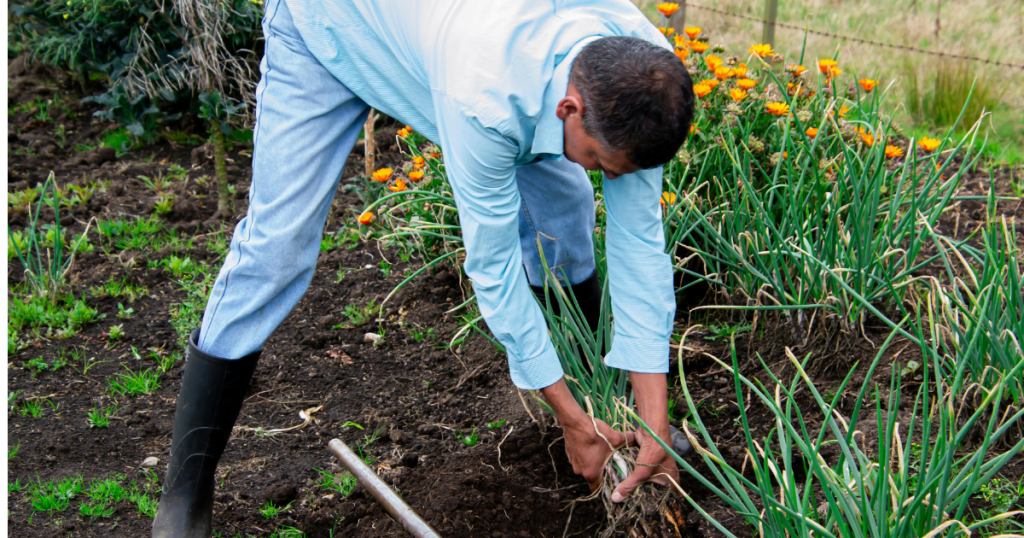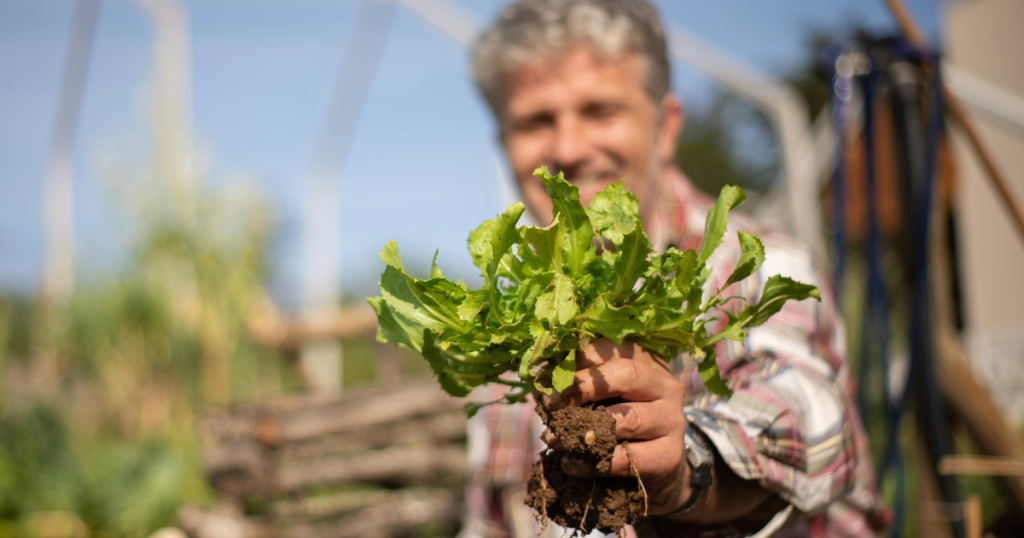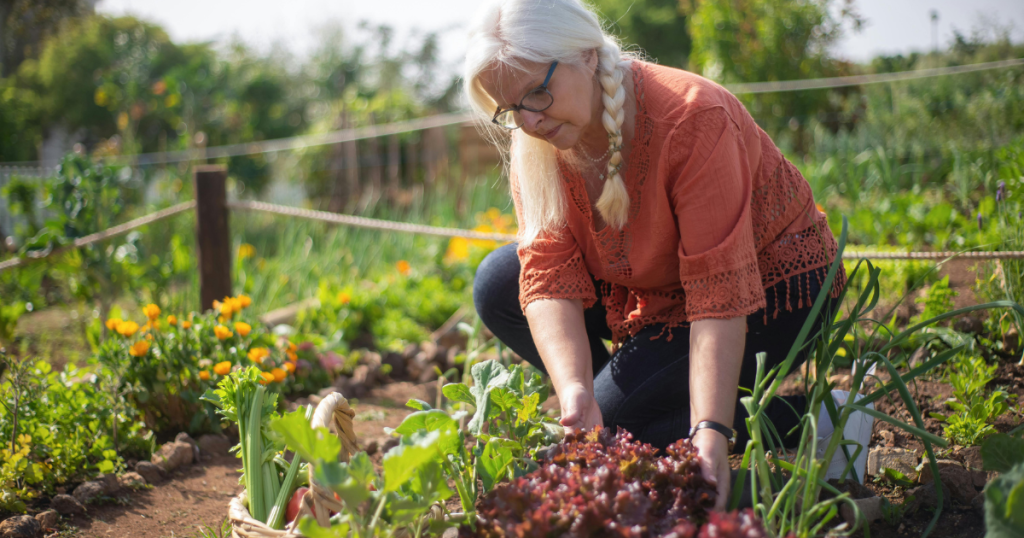Gardening Back Pain? Physio-Approved Stretches That Actually Help

Emma loved her garden so much that she could spend hours weeding, pruning, and planting. Situated between lavender rows and tomato vines, it was where her mind relaxed and her hands came alive.
After spending a long weekend, planting bulbs and weeding the flower beds, her lower back started aching. At first, she chalked it up to sore muscles and figured it would ease off. But by Monday morning, rolling out of bed felt like trying to unfold a rusty lawn chair.
Back pain from gardening isn’t just common, it’s something physiotherapists often see. The good news is you don’t have to stop gardening. You just need to prep your body before you dig in.
Let’s explore why your back takes a beating in the garden, and more importantly, the physio-approved stretches that can help protect it.
Why Gardening Triggers Back Pain
Gardening may feel gentle, but it demands a lot from your body. “An hour of light gardening or yard work burns about 330 calories per hour says research from the Clevand Clinic. Think about crouching over flower beds for hours, twisting to grab tools, awkwardly lifting a bag of soil, and pulling at odd angles. All these movements place more strain on your spine and the muscles around it than you imagine.
Here are some common pain points we see in gardening enthusiasts:
● Experiencing lower back strain when bending or lifting improperly
● Feeling some mid-back tightness from constant twisting or reaching
● Feeling neck and upper back tension when planting posture
Where things get worse is that much of this pain is entirely preventable..
The Physio Approach: Stretch Before You Dig

Just like you wouldn’t jump into a marathon without a warm-up, gardening might seem gentler, but your body still deserves the same preparation.
Physiotherapists recommend three key moments for stretching: before you start gardening, during mini-breaks, and after you wrap up.
Take a look at these simple stretches that can make a big difference.
1. Cat-Cow Stretch (for spinal mobility)
This gentle movement sequence works because it loosens up your spine, helping prevent stiffness before it starts. It’s more essential if you’ve been sitting or inactive before going to the garden.
This is how to do it:
● Start on all fours, placing wrists under your shoulders and knees under your hips
● Inhale and arch your back, lifting your head and tailbone (‘cow’ part)
● Exhale as you round your spine, and tuck your chin (‘cat’)
● Repeat slowly 10 times.
*Pro tip: This one is great too after long planting sessions.
2. Standing Back Extensions (for counteracting forward bending)
Why it works: All that forward bending over pulling weeds needs a counterbalance. This stretch opens the front of your hips and gently decompresses your lower back.
How to do it:
● Stand tall with hands resting on your hips.
● Gently lean backward until you feel a light stretch through the front of your hips and lower spine
● Hold for 3–5 seconds, and repeat 10 times.
You can do this one before, during, and after gardening. A quick reset like this mid-task can seriously reduce soreness later. “One of the most overlooked and easy tips I’ll teach my gardening patients is to pause, stand up
and do a back extension every 20 mins,” says Lalitha, a physiotherapist in Calgary at Brentwood Physio. “It’s easy, it’ll take like 10 seconds tops and makes a massive difference in how your back will feel later that night.”
3. Kneeling Hip Flexor Stretch (for tight front-of-hip muscles)
Why it works: When you kneel for long periods, your hip flexors shorten. Tight hips pull on your pelvis and can lead to lower back discomfort.
How to do it:
● Kneel on one knee, using a cushion or folded towel to support the knee on the ground
● Gently shift your weight forward until you feel a stretch in the front of your hip
● Keep your torso upright. Don’t arch your back
● Hold for 30 seconds, then switch sides.
4. Child’s Pose with Side Stretch (for the lower back and sides)
Why it works: This stretch targets the sides of your lower back and helps you feel more mobile, especially after extended time in one position.
How to do it:
● Kneel and sit your hips back onto your heels
● Reach your arms forward on the ground
● Now slowly walk your hands to the right, hold for 30 seconds, then switch to the left side
It’s a great cool-down stretch once you’re finished for the day.
5. Glute Bridges (to wake up your core and hips)
Why it works: Strong glutes support your lower back by absorbing the physical demands of bending, lifting, and reaching. Without them, your back takes on too much of the load.
How to do it:
● Lie on your back with your knees bent and feet flat on the floor
● Press through your heels to lift your hips until your body forms a straight line from shoulders to knees
● Squeeze your glutes at the top, then lower slowly
● Aim for 10 to 15 reps
Other Smart Moves While Gardening

Stretches are a great start, but they’re just one piece of the puzzle. To protect your back, try combining these movements with smart gardening habits:
- Switch positions often
Don’t stay stuck in one pose. Shift your stance or kneel differently every 10 to 15 minutes.
- Keep tools close
The more you stretch and twist for your tools, the more strain you put on your back. Keep essentials close by and at a comfortable height.
- Use the right gear
Long-handled tools reduce the need to bend deeply. A proper kneeling pad can also support your joints and relieve pressure on your spine.
- Take breaks and reset
Even just standing up for a quick back extension every 20 minutes can help you reset and prevent tightness from building up.
Final Thoughts
Emma didn’t give up on her garden, instead, she started doing these routine stretches before gardening. She set a timer to take posture breaks, used better tools, and cooled down with cat-cow and child’s pose afterward.
Her back pain faded, and her garden became her happy place again, without the sore mornings.
So if gardening makes your back grumble, don’t hang up your gloves. Give your body the support it needs with these stretches and smart habits. You’ll enjoy every moment in the garden without paying the price later.
You plant with care, so now move with care too.
